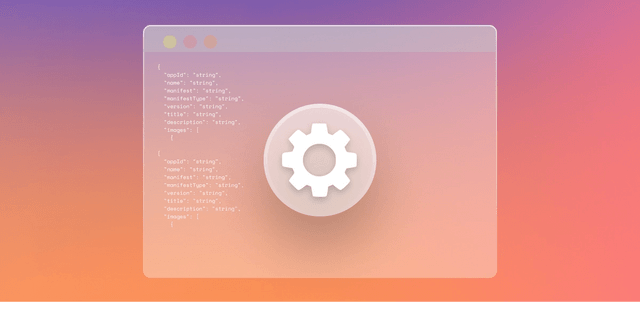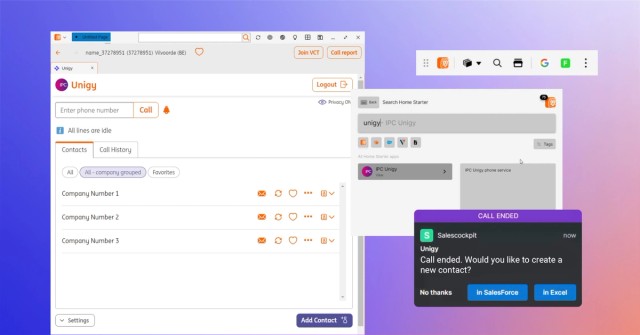October 6, 2020
Revolution and Evolution: Desktop Democracy

How democratization is changing the desktop for financial services firms
In our last post, we talked about how modernization has revolutionized the financial desktop, giving developers the power to leverage the vast tools at their disposal and build cutting-edge applications that are easier to deploy and update than ever before. By focussing on the nuts and bolts that make up these functionalities, we gain a greater appreciation of the extent to which innovation leads to a better experience for the end user.
However, this isn’t the only aspect of the digital transformation that is occurring across the financial services industry. In addition to modernization, there has been major momentum around the democratization of the desktop – that is, the idea that it should be easier for developers to deliver apps to end users at desktops managed by central IT. Today, we’ll examine how this shift is enabling efficiencies and innovation on an unprecedented scale.
A note to the reader, this is where it gets technical. For those of you eager for the granular detail, please read on… for those of you looking for the business value, we suggest skipping on to ‘Staying ahead of the curve’ and leave the app deployment and integration to the CIO or CTO!
Simplifying app deployment
Traditionally, bringing applications and content to financial services firms was the domain of large incumbents only. Software deployment was a difficult process involving many cumbersome steps and leading to significant overhead costs due to IT security reviews, software packaging, and other issues. These might seem like small considerations, but navigating them at scale was a tremendous undertaking, which led to smaller or upstart providers being squeezed out.
Deployment challenges affect not only emerging FinTechs but also incumbents including banks and major platform providers. Bank single dealer platforms (SDPs) for example have numerous difficulties deploying to their customers’ desktops and dealing with all the same issues that vendors have deploying to the banks’ internal desktops.
For app developers, whether FinTechs or incumbents, the deployment challenge exists whenever there is a need to install a desktop app. Browser-based apps aren’t installed and therefore don’t suffer from the same deployment overhead. The kinds of apps that require a native desktop experience (and not a browser experience) include apps for trading, real-time market data, order management, instant messaging, collaboration tools and much more — anything that needs to conserve screen real estate, popup, push, auto-start or otherwise maintain stickiness, this has become especially important with the growth of remote working. In fact, the vast majority of vendors in the capital markets space struggle through the pain of installing apps because the end user experience is so critical and browser apps won’t do.
A new solution has emerged that combines the best of both worlds – the ease of deployment of web apps and the native experience of installed apps. This new approach, sometimes referred to as “container technology”, gives web apps the look and feel of native applications with a range of powerful features designed to fit into modern workflows, while retaining the speed and flexibility of web deployment. There’s no need for software packaging or security reviews.
Although some firms attempt to “build their own container”, this approach also comes with overhead because the container must be approved by each destination firm and each upgrade to the container must also go through a packaging and review process. The better solution is to use a container technology that is already on your customers’ desktops in the same way that you deploy a website through the browser that is already on your customers’ desktops. OpenFin, for example, currently deploys more than 1,000 desktop applications across 225,000 desktops in more than 1,500 buy-side and sell-side firms in 60+ countries. With instant app deployment, your reach could extend across both the industry and the world — you’ll build a truly global ecosystem of transformative functionalities, delivering apps to customers with as little difficulty as possible which also means they can access innovation and updates faster than ever.
Deploying an app onto customer desktops has been a major boon for so many industry firms – and not just the smaller technology providers. Even for the largest banks, this has historically been a difficult task. Today, many of these financial institutions are beginning to realize just how much they’re being held back by processes that are stuck in the last century, and are now taking steps to exert more control over app distribution. Our work with BNP Paribas is a great example of this – the bank used OpenFin to build its Cortex LIVE single-dealer FX platform and deploy it to buy-side clients, greatly speeding up adoption.
Building seamless workflow integration
Democratization isn’t just limited to deploying apps. Industry momentum around interoperability is another key example of how the desktop is being democratized, allowing just about anyone to build powerful functionalities that can be seamlessly integrated into existing workflows.
As an example, picture a startup data provider. Banks and buy-side firms might be intrigued by the small provider’s offering, but when they weigh it against large legacy players who may already be providing them with other products, the choice is easy. All else being equal, firms will select the offering that fits into a larger suite of apps, as it will lead to minimal workflow disruption and is easily justifiable.
With a future-focused provider like OpenFin, this dynamic is extended to every app in our ecosystem. By following popular industry interoperability standards, developers can build in bilateral communication with hundreds of other apps, regardless of origin. This is a powerful democratizing force because it effectively eliminates the incentive to go with a single, monolithic provider – instead, banks and buy-side firms have their choice in determining who has built the best tools for its business. App providers no longer need institutional advantages on their side; increasingly, they are evaluated on the strength of the functionality alone, which places a greater importance on innovation and drives the entire industry forward.
In addition, the seamless workflow integration means that end users are engaging with apps like never before. When a workflow automatically invokes an app, it attracts the eye immediately, providing a level of engagement that could not be replicated if end users were left to their own devices. This is crucial exposure for fledgling providers.
Note to the reader, for those of you who skipped down, welcome back!
Staying ahead of the curve
Firms that choose not to leverage these advantages around deployment and interoperability need to understand that their competitors are all too eager to fill the gap. Democratization means it is easier than ever to bring apps to a client, but that principle applies to the entire industry – so if your company isn’t building its products for maximum compatibility, chances are that one of your competitors is. While they don’t face the same existential problems, large firms stand to benefit from digital transformation just as smaller ones do, and there’s no time like the present to start pouring resources into areas where there may be a greater chance of displacement.
There’s no telling exactly how the coming years will play out, but it’s safe to say that our industry will continue to democratize. The barriers to deployment and workflow integration are crumbling as developers become more empowered to reach end users in a streamlined fashion. Ultimately, we are working to eliminate legacy considerations and allow firms to become more meritocratic in selecting their solutions – and that’s a future we’re proud to help build.
If you’re ready to explore democratization of your app development, get in touch with the OpenFin experts today.
Enjoyed this post? Share it!
Related Posts
All Posts ->
Featured
Enhanced Deployment Flexibility with OpenFin's Fallback Manifests
Thought Leadership

Featured
ING Integrates OpenFin for Salesforce to Optimize Workflows
Thought Leadership